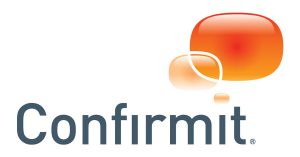 It is no secret that today’s workforce is increasingly hard to satisfy. The modern worker is no longer settling for a decent salary – they want good benefits, above-liveable pay, and especially moral and ethical standards that foster a safe and engaging work environment. These are not unreasonable demands, in fact, businesses should be supplying all the above. However, some companies still lag in pleasing their workforce, and in many cases, this is a result of not understanding the impact employees have on their bottom line.
It is no secret that today’s workforce is increasingly hard to satisfy. The modern worker is no longer settling for a decent salary – they want good benefits, above-liveable pay, and especially moral and ethical standards that foster a safe and engaging work environment. These are not unreasonable demands, in fact, businesses should be supplying all the above. However, some companies still lag in pleasing their workforce, and in many cases, this is a result of not understanding the impact employees have on their bottom line.
Business professionals are learning that employees are among the most valuable marketing tools available to them. Not only is a happy employee willing to work harder within their position, they will advocate for the company inside and outside of work. This translates into positive company news spread by word of mouth meaning: lower recruitment costs, unpaid “advertising”, and perhaps most importantly, positive customer experiences. According to Gallup, “highly engaged business units achieve a 10% increase in customer metrics and a 20% increase in sales.” As such, employee engagement should escalate to a high priority in the business model.
However, in a recent study, 90 percent of respondents indicated that traditional employee engagement strategies are no longer sufficient. So, what can businesses do to ensure that their workforce is committed? I recommend looking to technology for assistance.
Also Read: How to Stop Your MO Group from Regressing
The Employee’s Voice on the Customer Experience
Organizations should be moving beyond the dull, and frankly ineffective, annual employee survey. Advanced means to enhance employee engagement are readily available; one such avenue is an agile Voice of the Employee (VoE) program. According to recent research, “almost one-third of employees (30 percent) don’t feel the company they work for is empathetic, and about half (51 percent) feel that organizations and companies as a whole are not empathetic.” In other words, over half of employees do not feel they are being heard.
Listening to employee voices is exactly what a VoE program aims to achieve. This type of program measures employees’ motivation, commitment, and sense of well-being within their position via a regular cadence of calculated surveying. The program gives employees an accessible platform to express feedback and businesses can tailor-make the program to suit their organization. Businesses will have regular qualitative and quantitative data on the state of their workforce and can act upon those metrics to foster an even more profitable environment.
An added benefit of the VoE program for the organization’s C-suite is that employees will have the chance to disclose what customers are saying about their experiences. Employees are the people interacting with customers on a day to day basis and an agile approach to employee listening can provide a channel for them to share this insight.
Also Read: Yeah, OTT Advertising is a BFD
The Critical Questions to Ask
While the benefits of measuring the employee’s voice are unmistakable, it is essential that the VoE program is crafted strategically, such that employees feel empathy from their employer and businesses can reap all the rewards the program has to offer. In the creation process, organizations should ask:
- What are we hoping to improve within our business, and how will this program help to meet those objectives?
- Are we prepared and willing to make the necessary changes that will result from the survey insights?
- At which touchpoints should we be listening to our employees? How do we enable them to provide feedback at the right time and on their terms?
- How would we like out metrics to be delivered and what will we do to act upon the feedback?
- **This is a particularly important question to be answered—if a business does not act upon the new insights, it will not see ROI from the VoE program.
- What will we do to communicate to our workforce that their voice has been heard?
- How will we protect the anonymity of our employees such that they feel safe providing honest feedback?
- How will we recognize our employees’ additional efforts by engaging with this program?
In Conclusion
A VoE program is an advanced and critical tool for the modern business that is helping to decrease those 51 percent of employees that do not feel their workplace hears or empathizes with them. The regular cadence of metrics and feedback supplied to the organization humanizes their employees as if a whole team is coming to speak to the C-suite with insights on how to improve the bottom line. A VoE program can and will shift an organizational culture to be engaged, so long as the business acts upon the new insights. Ultimately, a VoE program can become a valuable marketing tool for any business: happy employees mean happy customers, and all marketing professionals know the power of the word of mouth.
Also Read: Top 5 Customer Communications Trends in 2018












Comments are closed.